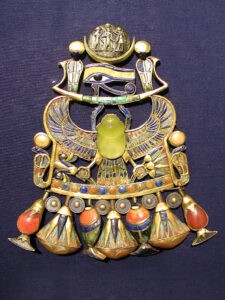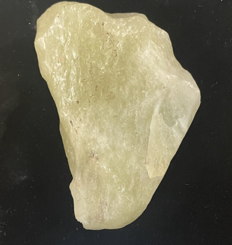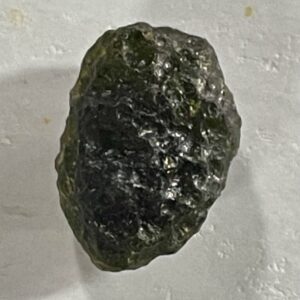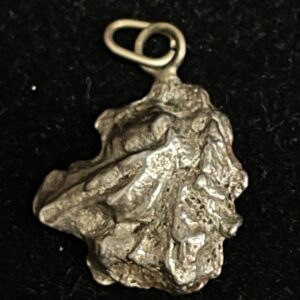Description
Large Libyan Desert Glass 1510m carats
Libyan Desert glass is an impactite or tektite found in areas in the eastern Sahara. Fragments of desert glass can be found over areas of tens of square kilometers in the deserts of eastern Libya and western Egypt.
This large example of raw Desert Glass weighs 302 grams or 1510 carats. It measures 4 in x 3 in x 2 in.
Scientists have dated Libyan Desert glass to about 26 million years ago. They think it was probably formed from an explosion of a comet or a meteorite impact, forming a type of natural glass.
Trace amounts of unusual elements, like iron, nickel, chromium, cobalt and iridium are found in the desert glass. It is among the rarest minerals on Earth, as it is found only in the north of the Gilf Kebir Plateau. This area is one of the most remote and desolate areas in the Libyan Desert.
When King Tutankhamun’s tomb was discovered, King Tut was wearing a beautiful pectoral. This was a breastplate decorated with gold, silver, various precious jewels and a strange yellow gemstone. Years later scientists determined that the yellow gemstone was indeed what we now call “Libyan Desert Glass”.









Comments are closed.